Abstract
To characterise the relation between pharyngeal anatomy and sleep related disordered breathing, 17 men with complaints of snoring were studied by all night polysomnography. Ten of them had obstructive sleep apnoea (mean (SD) apnoea-hypopnoea index 56.3 (41.7), age 52 (10) years, body mass index 31.4 (5.3) kg/m2); whereas seven were simple snorers (apnoea-hypopnoea index 6.7 (4.6), age 40 (17) years, body mass index 25.9 (4.3) kg/m2). The pharynx was studied by magnetic resonance imaging in all patients and in a group of eight healthy subjects (age 27 (6) years, body mass index 21.8 (2.2) kg/m2, both significantly lower than in the patients; p less than 0.05). On the midsagittal section and six transverse sections equally spaced between the nasopharynx and the hypopharynx several anatomical measurements were performed. Results showed that there was no difference between groups in most magnetic resonance imaging measurements, but that on transverse sections the pharyngeal cross section had an elliptic shape with the long axis oriented in the coronal plane in normal subjects, whereas in apnoeic and snoring patients the pharynx was circular or had an elliptic shape but with the long axis oriented in the sagittal plane. It is suggested that the change in pharyngeal cross sectional shape, secondary to a reduction in pharyngeal transverse diameter, may be related to the risk of developing sleep related disordered breathing.
Full text
PDF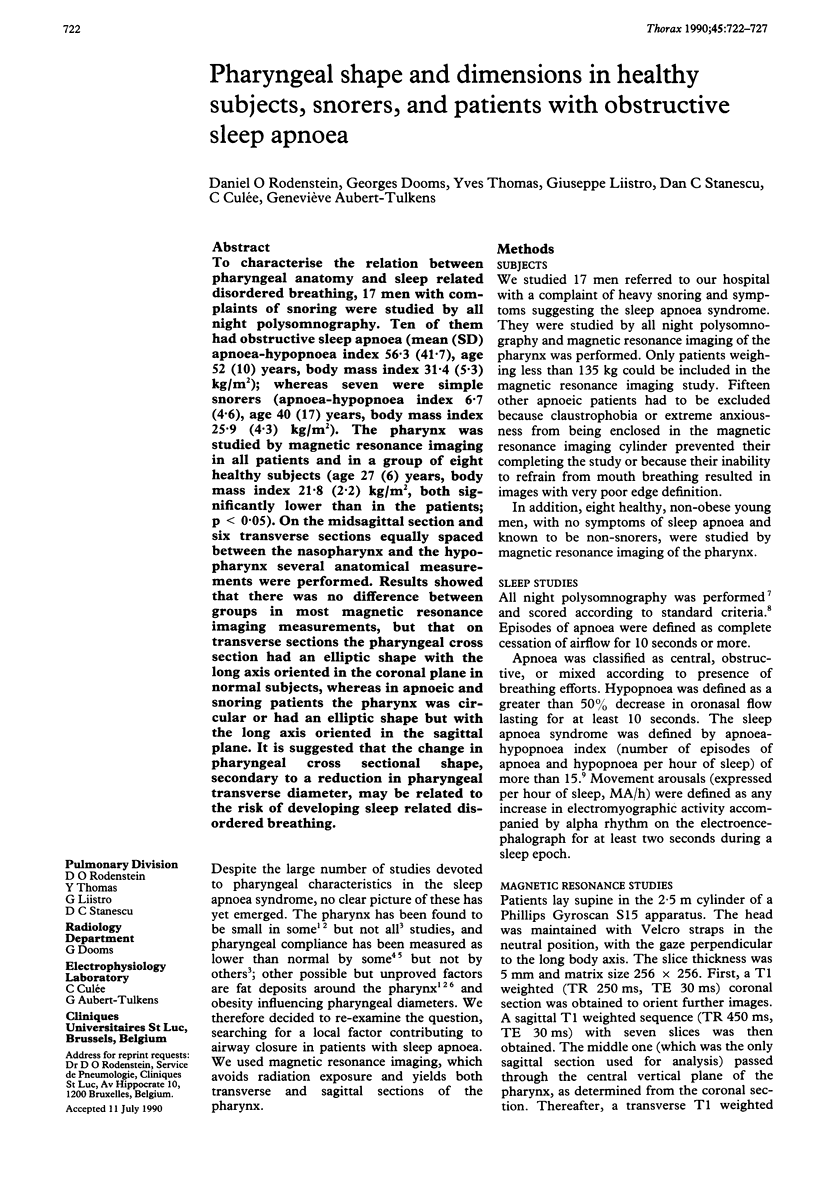
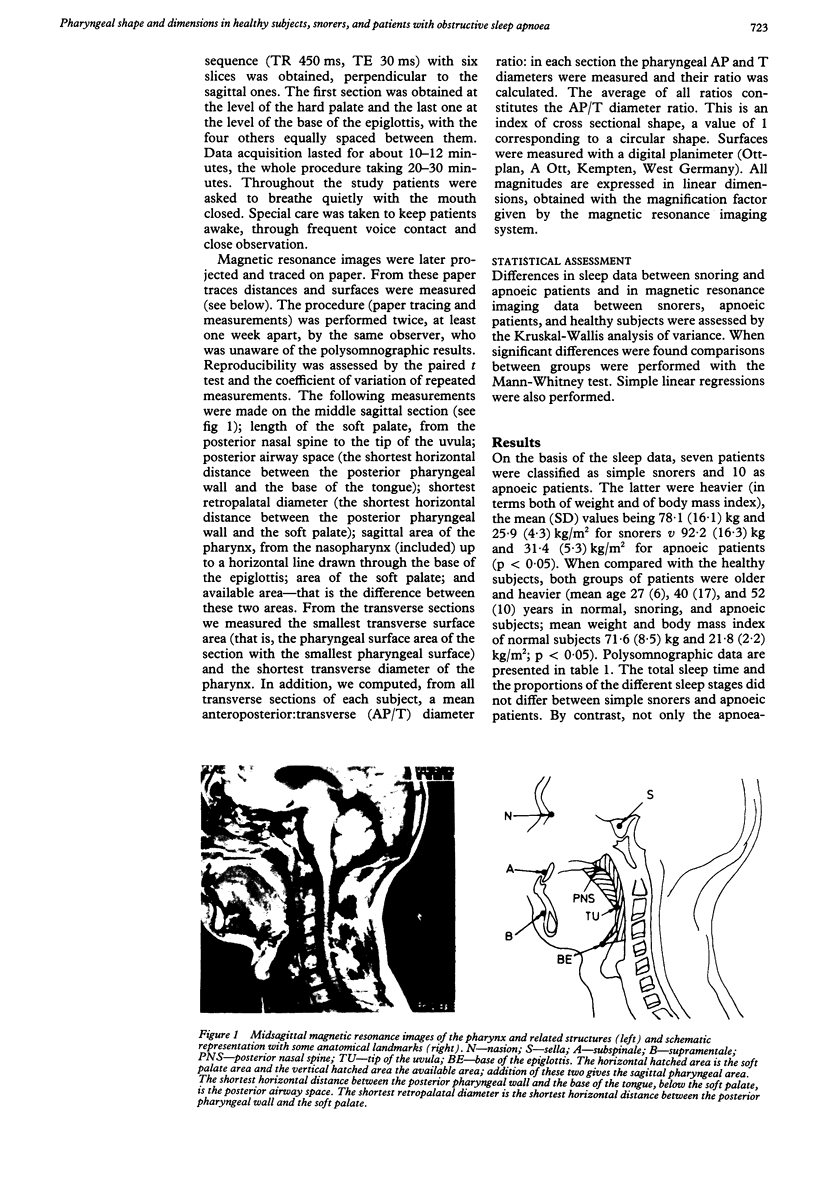
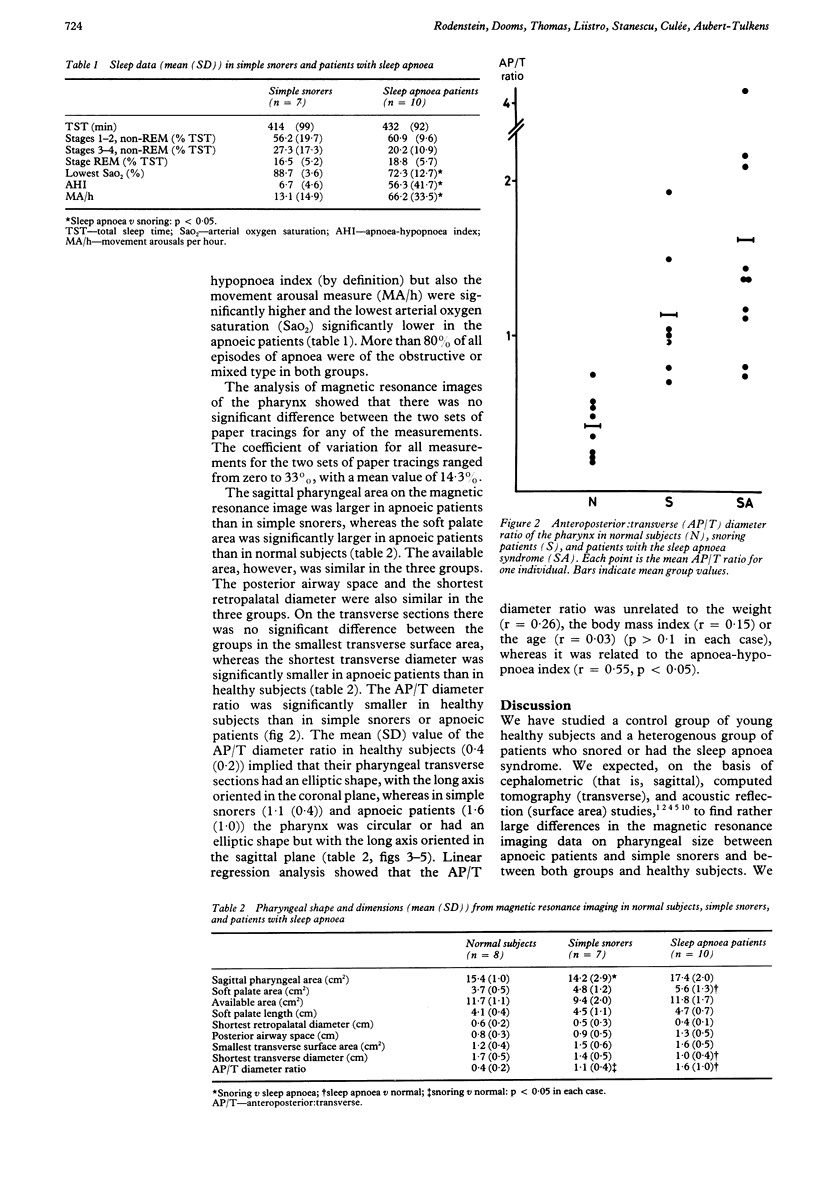
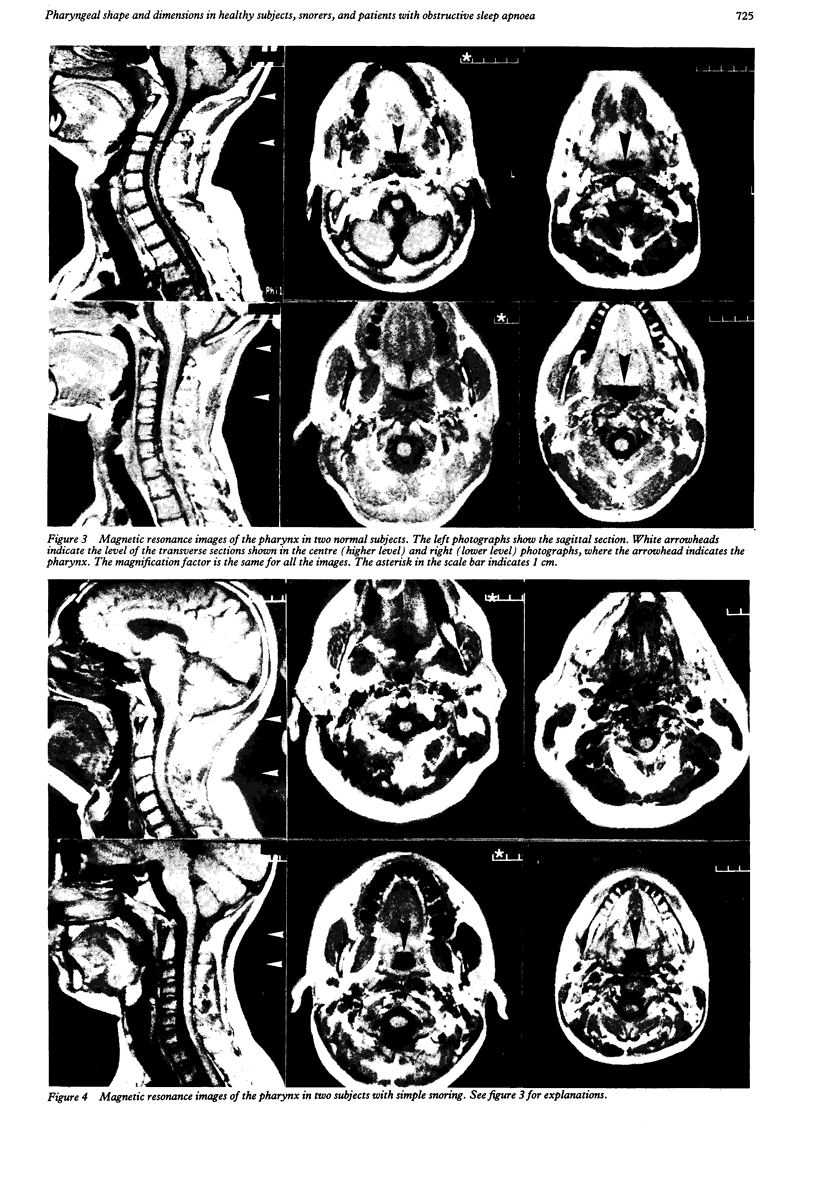
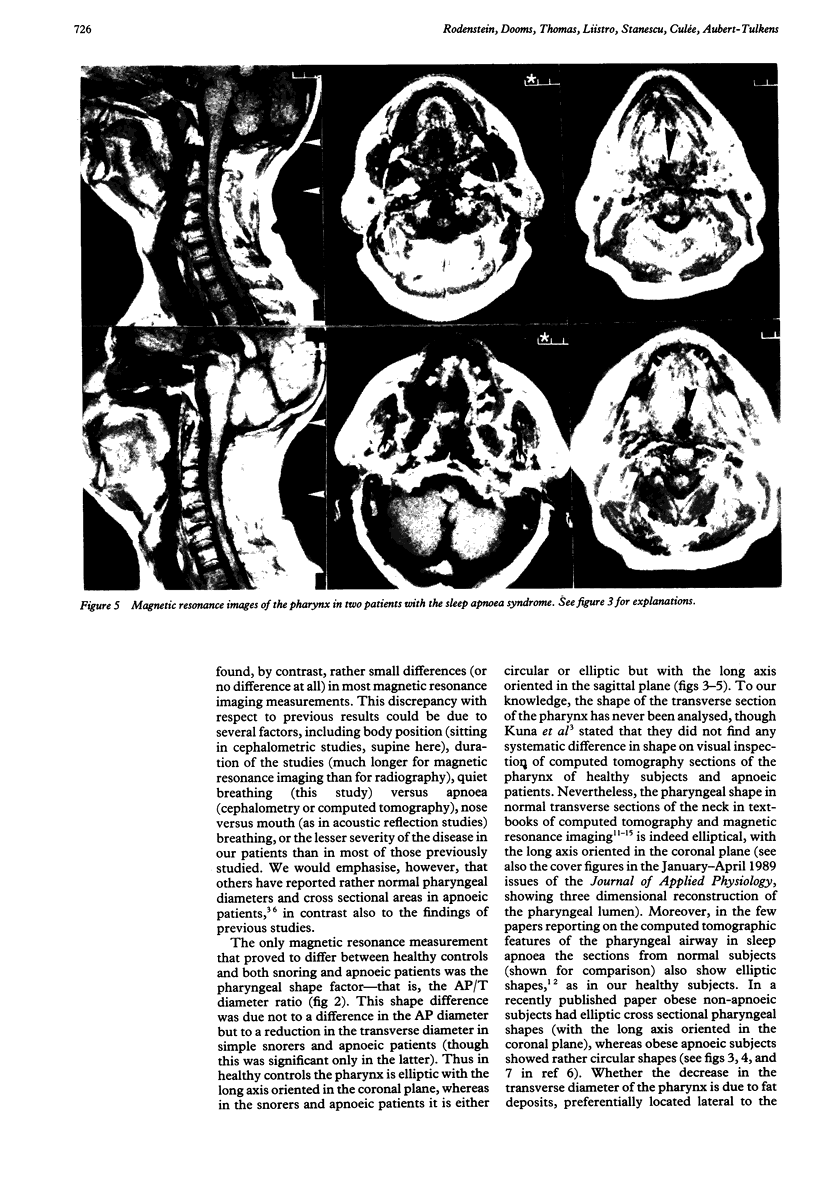
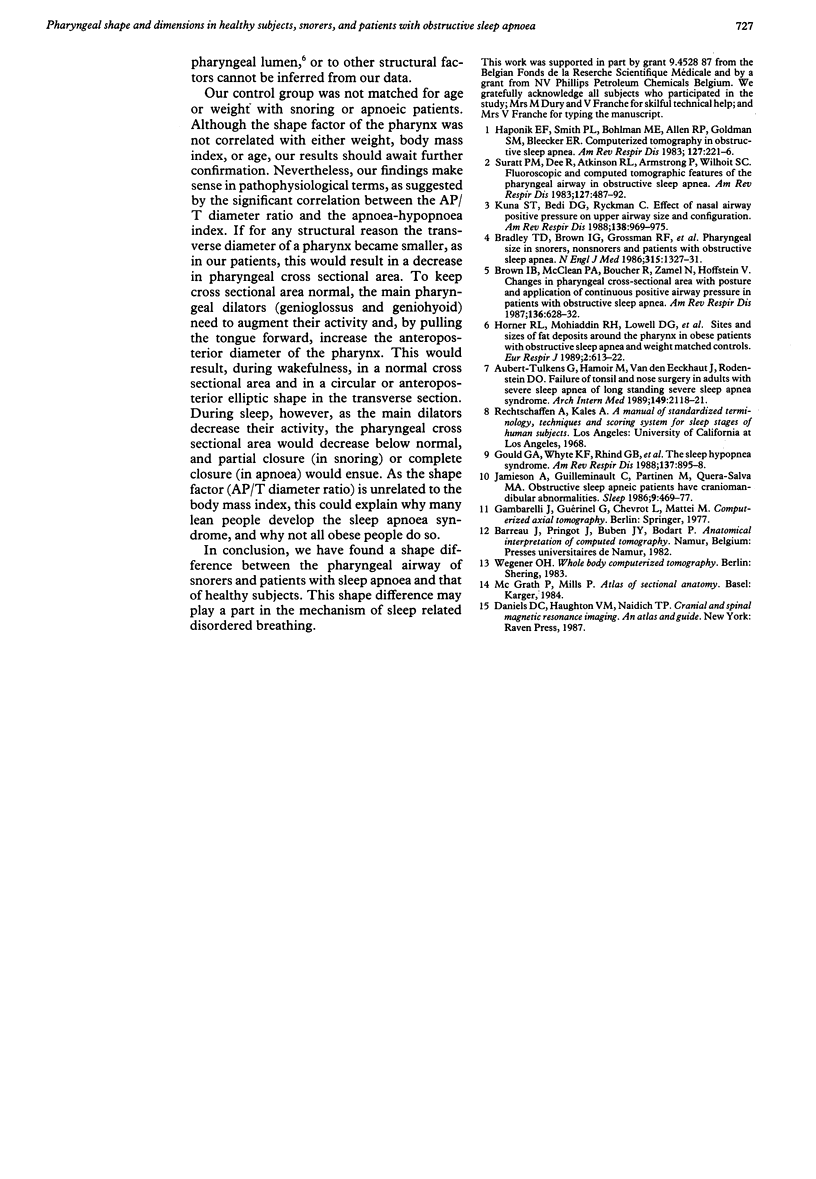
Images in this article
Selected References
These references are in PubMed. This may not be the complete list of references from this article.
- Aubert-Tulkens G., Hamoir M., Van den Eeckhaut J., Rodenstein D. O. Failure of tonsil and nose surgery in adults with long-standing severe sleep apnea syndrome. Arch Intern Med. 1989 Sep;149(9):2118–2121. [PubMed] [Google Scholar]
- Bradley T. D., Brown I. G., Grossman R. F., Zamel N., Martinez D., Phillipson E. A., Hoffstein V. Pharyngeal size in snorers, nonsnorers, and patients with obstructive sleep apnea. N Engl J Med. 1986 Nov 20;315(21):1327–1331. doi: 10.1056/NEJM198611203152105. [DOI] [PubMed] [Google Scholar]
- Brown I. B., McClean P. A., Boucher R., Zamel N., Hoffstein V. Changes in pharyngeal cross-sectional area with posture and application of continuous positive airway pressure in patients with obstructive sleep apnea. Am Rev Respir Dis. 1987 Sep;136(3):628–632. doi: 10.1164/ajrccm/136.3.628. [DOI] [PubMed] [Google Scholar]
- Gould G. A., Whyte K. F., Rhind G. B., Airlie M. A., Catterall J. R., Shapiro C. M., Douglas N. J. The sleep hypopnea syndrome. Am Rev Respir Dis. 1988 Apr;137(4):895–898. doi: 10.1164/ajrccm/137.4.895. [DOI] [PubMed] [Google Scholar]
- Haponik E. F., Smith P. L., Bohlman M. E., Allen R. P., Goldman S. M., Bleecker E. R. Computerized tomography in obstructive sleep apnea. Correlation of airway size with physiology during sleep and wakefulness. Am Rev Respir Dis. 1983 Feb;127(2):221–226. doi: 10.1164/arrd.1983.127.2.221. [DOI] [PubMed] [Google Scholar]
- Horner R. L., Mohiaddin R. H., Lowell D. G., Shea S. A., Burman E. D., Longmore D. B., Guz A. Sites and sizes of fat deposits around the pharynx in obese patients with obstructive sleep apnoea and weight matched controls. Eur Respir J. 1989 Jul;2(7):613–622. [PubMed] [Google Scholar]
- Jamieson A., Guilleminault C., Partinen M., Quera-Salva M. A. Obstructive sleep apneic patients have craniomandibular abnormalities. Sleep. 1986 Dec;9(4):469–477. doi: 10.1093/sleep/9.4.469. [DOI] [PubMed] [Google Scholar]
- Kuna S. T., Bedi D. G., Ryckman C. Effect of nasal airway positive pressure on upper airway size and configuration. Am Rev Respir Dis. 1988 Oct;138(4):969–975. doi: 10.1164/ajrccm/138.4.969. [DOI] [PubMed] [Google Scholar]
- Suratt P. M., Dee P., Atkinson R. L., Armstrong P., Wilhoit S. C. Fluoroscopic and computed tomographic features of the pharyngeal airway in obstructive sleep apnea. Am Rev Respir Dis. 1983 Apr;127(4):487–492. doi: 10.1164/arrd.1983.127.4.487. [DOI] [PubMed] [Google Scholar]






